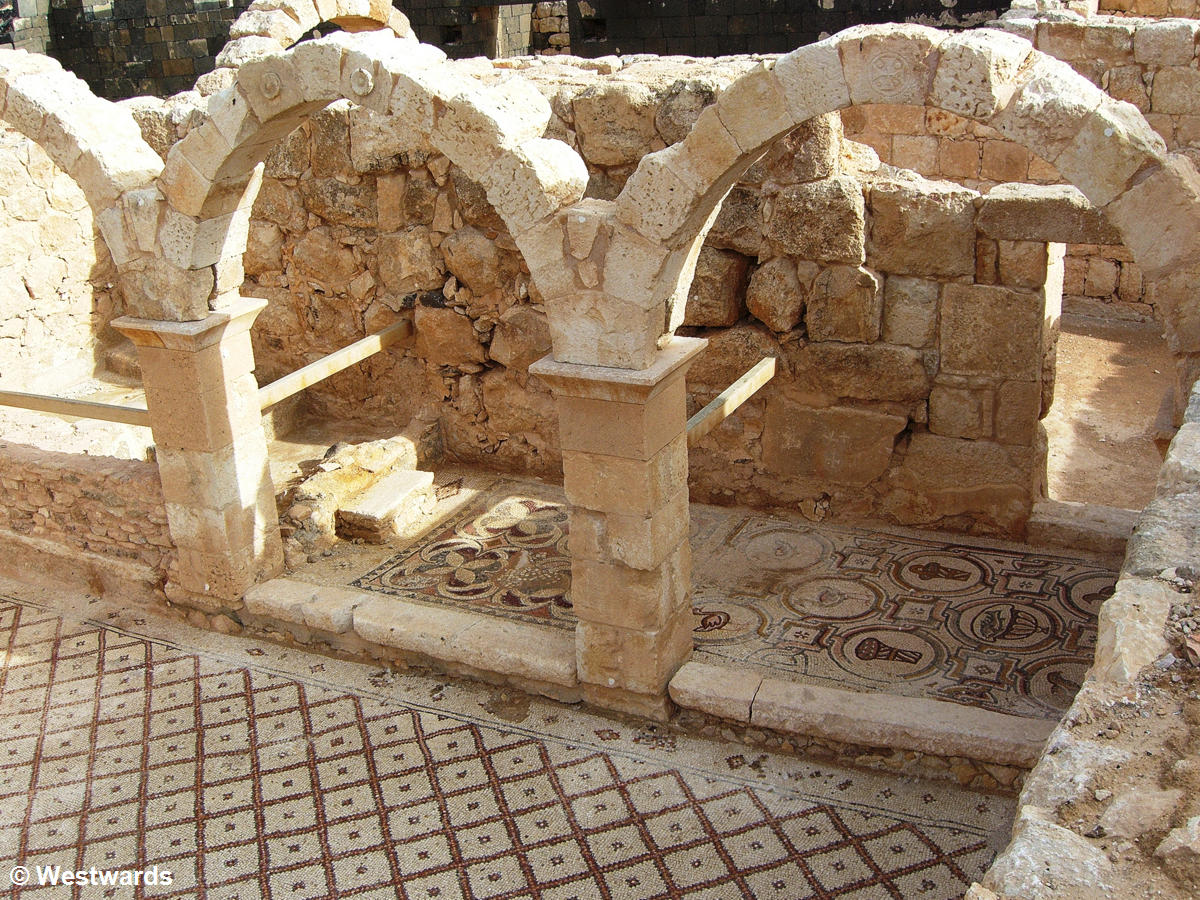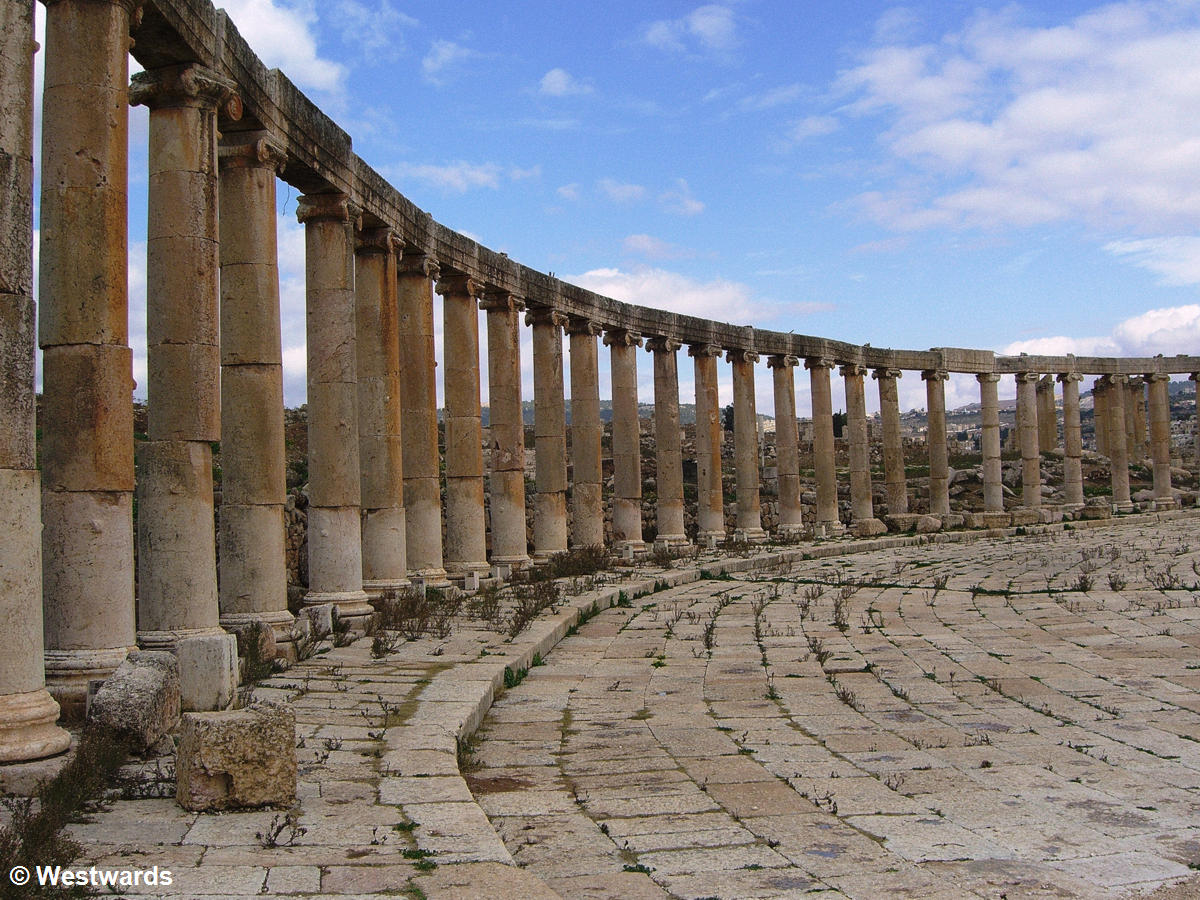
„This Roman,“ the withered old caretaker mumbles from behind his red and white chequered scarf and points his staff to a Maltese cross above the stone arch. Roman? We are on a tour of small castles built by the Muslim Umayyad rulers in the Eastern desert of Jordan. The exact purpose of these desert castles is not quite established. Possible explanations range from “Bonding with Bedouins” over “Pleasure parlours for Umayyad princes” to “Agricultural Management”. But quite a number of these castles stand on former Roman sites, and the Umayyads have reused the building material. Part of the “Limes Arabicus,” a huge border wall like the German Limes, the Roman forts were built to fence off the barbarians at the Eastern outskirts of the Empire, in this case the Arab tribes from the desert.

The fringes of Rome
For months now we have been visiting Roman forts and settlements with Roman theatres, Roman temples, Roman colonnaded streets and, yes, Roman churches. For the area became part of the Eastern empire when Rome was divided in the 3rd century, and continued to prosper well into the 7th century AD under Byzantine rule. Thus, “Roman” in Syria and Jordan often also means “Byzantine”.

Many provincial Roman towns in the Middle East, like Jerash, Umm Qais or Apameia, but also Aspendos or Perge in Turkey, experienced their prime in the 2nd and 3rd centuries AD, when rich citizens donated whole temples and theatres. Palmyra, a trading town on the Silk Road to Persia, was so powerful in the 3rd century that its queen Zenobia tried to overthrow the Roman emperor Aurelian (unsuccessfully). For five years her realm spanned from what today is Armenia to Northern Africa.
Roman Empire standard models
Often, the remains of these towns are neither architecturally unique nor particularly artful. After all, they were provincial towns in the far corners of the “civilised world”. Buildings were copied from a Roman standard model of the Roman empire, statues of emperors mass produced from a plaster copy shipped in from Rome. What makes the towns so stunning is their state of preservation: We wander along the old main streets with pedestrian areas and beautiful colonnades going onto shopping arcades. In the stone slabs of the street pavement, the ancient ruts are still visible. From huge squares or forums, imposing steps lead up to largely restored temples; the public bath has a damaged mosaic floor, and some sales counters are still in place in the round food market. Some of the theatres, like Aspendos, Bosra and Jerash, are very well restored and used for performances in summer.

The Dark Ages
Even in the 6th or 7th centuries, which we think of as “dark ages” because not much remains in Europe from that time, numerous small towns in the east prospered from their trade in wine and olives. By then, they were full of churches, as most inhabitants had become Christians, but columns, capitals and mosaics still dominated the building style.

“Look,” a young would-be guide shows us an acanthus leaf: “It’s called Korintin. That’s why these capitals on the cathedral are Korintins, but those over there are Ionians.” We look at the row of Corinthian capitals and think of our history textbooks, where the Roman Empire was just a pink blot on a map, even if it filled almost an entire page. But with the opulence of these provincial towns in mind, we can now imagine far better than any Eyewitness Guide reconstruction can show how fabulous the antique Rome must have been like.



